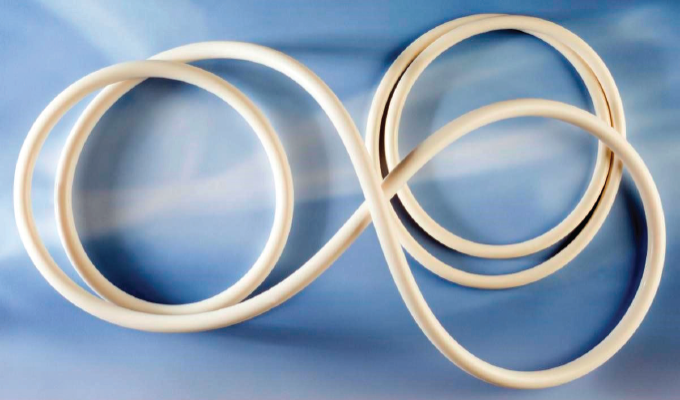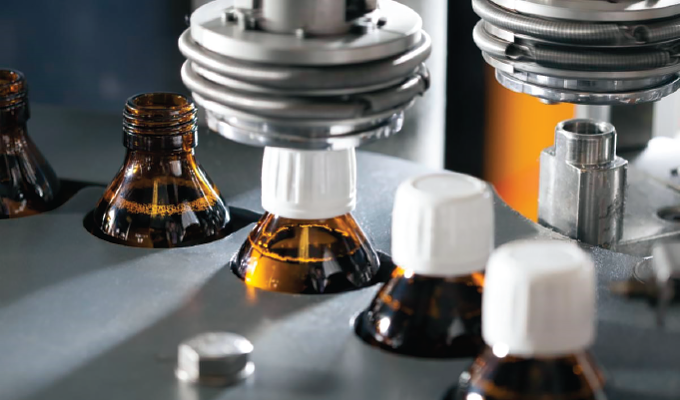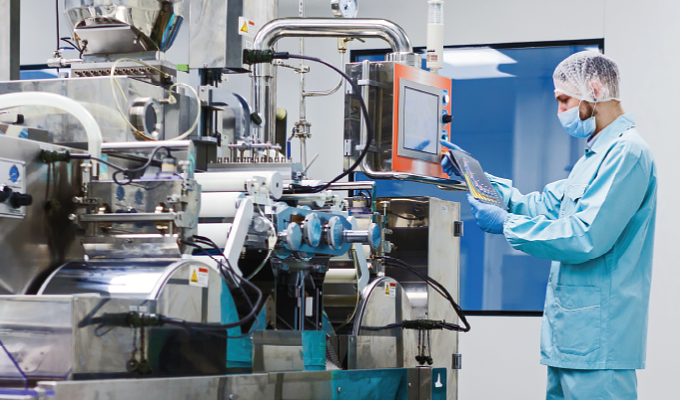By Ray Daugherty and Mathew Griffin, Greene Tweed
A wide range of materials can be found in life sciences applications such as the manufacturing of pharmaceuticals, medical devices, and analytical equipment. All of these materials, however, need to be highly pure and stable to a wide array of solvents and temperatures. Materials in life sciences applications must be able to meet stringent demands for safety, quality assurance, and reliability in order to keep costs down and meet end users’ needs. It can be difficult to gauge these needs, though, given that life sciences equipment manufacturers might not know the exact uses for their products in end users’ applications.
Take, for example, a pump manufacturer: though that manufacturer must choose the materials and material sources for their pumps, they must do so without knowing what each and every end user will be handling with those pumps. As a result, they must choose materials that will ensure safety, quality, and reliability across a wide range of use cases. In life sciences, that means ensuring that all materials are inert, stable across temperatures, and robust in the face of frequent use or harsh sterilization procedures. This article will explore how sealing materials, in particular, have been developed to meet these stringent needs in life sciences applications.

SEAL MATERIALS FOR LIFE SCIENCES
Seals are a critical component in a wide range of life sciences manufacturing applications. In pharmaceutical manufacturing, seals are used in pumps, valves, filters, regulators, dryers, and sanitary connections. In analytical instrumentation, they are also found in pumps and valves, as well as in chromatography equipment. Some medical devices, like dialyzers, ventilators, and surgical tools, also make use of seals to protect the devices and the patient’s body.
As with most materials in life sciences applications, seals must meet stringent demands for safety and efficacy. Depending on their end use, this might translate to suitability for high temperature use, chemical compatibility, minimizing leachables and extractables, or robustness in the face of sterilization with steam, chemicals, or radiation. Elastomeric seals such as o-rings, gaskets, and diaphragms are often the weakest point of manufacturing systems, and their failure can result in adulteration of drug products or specimens, which can then incur subsequent investigations, and high costs.
Some examples of elastomers used for seals in life sciences applications include silicone, EPDM, FKM, and PTFE-encapsulated silicone; each of these has benefits, as well as conditions to which they are not suitable. Though inert, silicone breaks down under high pH conditions, and doesn’t tolerate steam sterilization well. It is therefore not safe for all life sciences applications, since it may be impossible to sterilize completely.
Ethylene propylene diene monomer (EPDM) rubber can be manufactured to be compatible with steam but may suffer degradation when in contact with non-aqueous solutions. As a result, some cleaning products are not compatible, and processes involving animal fats or fatty molecules could attack the material’s surface and lead to quality issues.
Fluoroelastomer (FKM) can handle non-aqueous materials, but, like silicone, breaks down under high pH conditions. The common cleaning product sodium hydroxide (lye)—used to remove organic matter in bioprocessing, chromatography, medical device decontamination, and many more applications—is thus incompatible with FKM seals.
Encapsulated seals, which utilize PTFE over silicone or FKM, are sometimes used in life sciences applications as seals on doors or lids that have to open and close. This is an inappropriate use of this kind of seal, as the PTFE becomes brittle over time and cracks. Once cracks form, the process fluids swell the silicone or FKM, resulting in catastrophic failure of the seal and then contamination of the pharmaceutical product.
Each of these seal materials can be useful so long as their specific end use is known and these exceptions can be avoided. All of them, however, can be dangerous—and expensive—if used in manufacturing products whose end uses are unknown, and incompatible conditions occur. The expense occurs in the case of failure, when seals must not only be replaced, but manufacturing or processing must halt. These halts usually last for a week or more, as teams across the organization determine the cause of failure, design corrective actions, and implement necessary maintenance. In life sciences applications where both labor and product costs are high, unplanned downtime and discarding batches of products after a failure can be extremely costly, even to the order of millions of dollars.
MEETING CHALLENGES WITH SUPERIOR SEALING SOLUTIONS
How, then, can manufacturers ensure their parts are meeting the needs of all their customers, whether in research, food or pharmaceuticals? The key is selecting a seal material with the greatest possible compatibility across a wide range of temperatures, chemical profiles, clean procedures, and more. One such material is perfluoroelastomer (FFKM), like Greene Tweed’s Chemraz®, which has been specified into a variety of critical applications, including life sciences, for more than thirty years.
Chemraz perfluoroelastomers contain higher amounts of fluorine than other sealing materials, thus ensuring stability in higher temperature conditions up to 662 degrees Fahrenheit (350 degrees Celsius), a wider chemical compatibility range, and minimization of leachables and extractables. The material is inert to nearly all solvents and reactants. Combining this inertness with its high temperature profile and other features, Chemraz perfluoroelastomers can safely be sterilized repeatedly with steam, chemicals, or radiation and remain functional and safe.
This kind of wide compatibility range can lead to cost savings in the long term. Seals manufactured from Chemraz deliver an increased mean time between repairs (MTBR), and so they can be replaced less frequently, require less maintenance, and minimize unexpected downtime for failures. What’s more, they minimize adulteration and batch loss because of their robustness in nearly all conditions.
Greene Tweed offers Chemraz materials suited for life sciences up to 500 degrees Fahrenheit (260 degrees Celsius) for continuous operations; other portfolio options exist for excursions up to 662 degrees Fahrenheit (350 degrees Celsius). Greene Tweed engineers consult with engineers in life sciences applications in order to understand what material would best suit each individual manufacturing process.

SUPERIOR SEALING MATERIALS AT WORK
Perfluoroelastomers have been proven to deliver significant benefits in a number of life sciences applications. Chemraz products, for example, have been used by a major pharmaceutical manufacturer responding to the COVID-19 crisis, using the seals in syringe pumps to ensure compatibility with active pharmaceutical ingredients. They have also been used as a replacement for silicone in plasma cutters thanks to their superior thermal resistance. By ensuring compatibility across a wider range of solvents and temperatures than other materials, these materials improve reliability and uptime throughout life sciences manufacturing applications.
FOR MORE INFORMATION
Ray Daugherty is new business development—life sciences and Mathew Griffin is product marketing analyst for Greene Tweed, a leading global manufacturer of high-performance thermoplastics, composites, seals, and engineered components. Combining more than 150 years of technical expertise and commercial knowledge in a variety of markets, Greene Tweed collaborates with customers to develop engineered solutions that meet challenging performance requirements and reduce total cost of ownership. For more information, call 215.256.9521 or visit www.gtweed.com.
MODERN PUMPING TODAY, January 2021
Did you enjoy this article?
Subscribe to the FREE Digital Edition of Modern Pumping Today Magazine!



